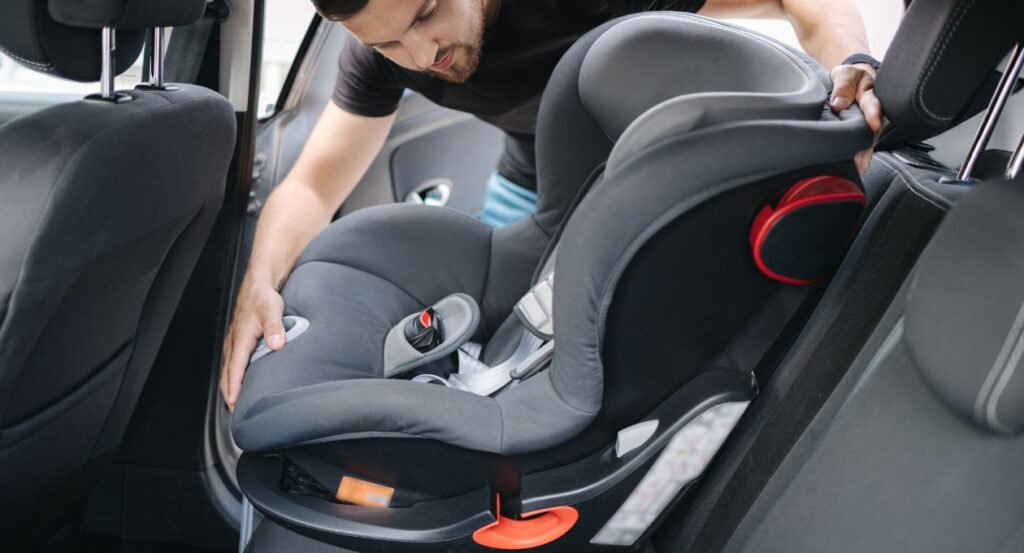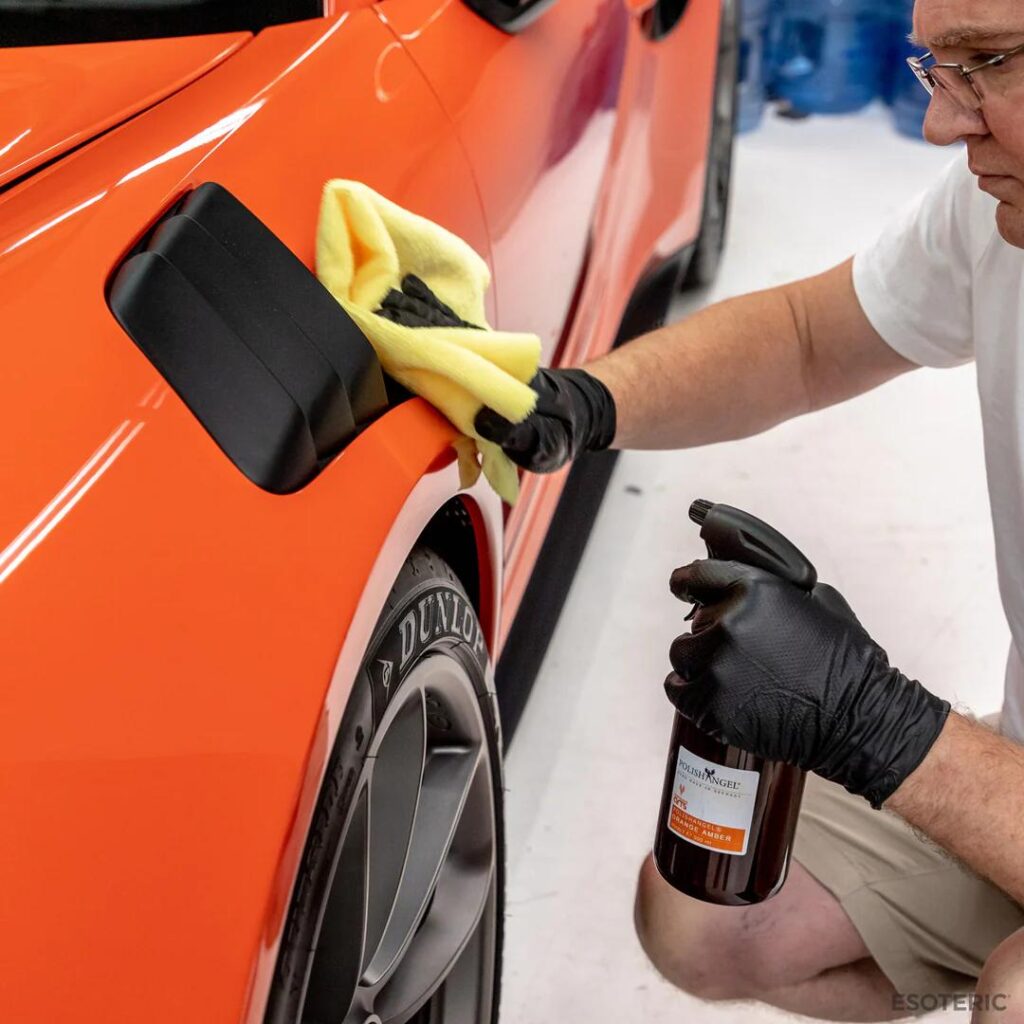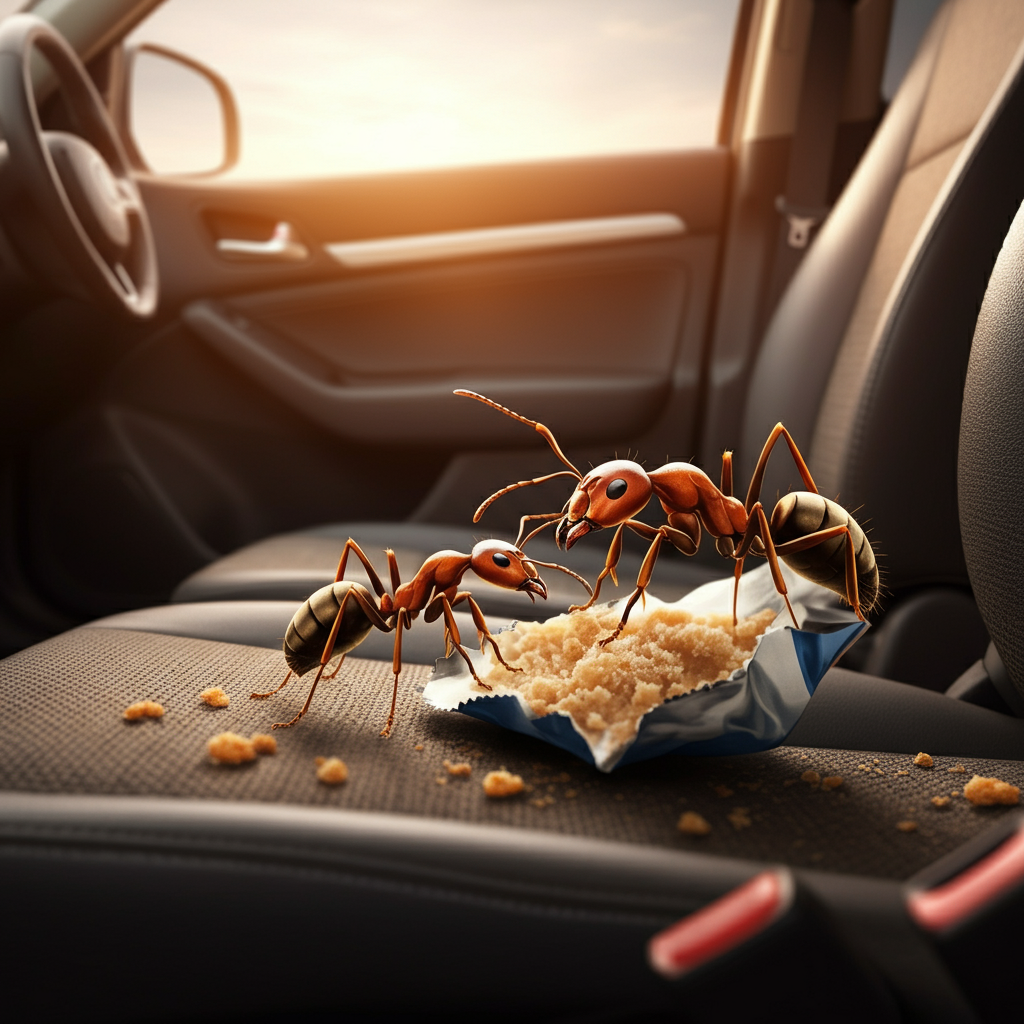As an Amazon Associate, I earn from qualifying purchases
Nothing ruins a pleasant car ride quite like discovering a sticky, stubborn piece of chewing gum plastered to your car seat. Whether it was dropped accidentally by a passenger or transferred from clothing, gum on car upholstery can feel like a nightmare to remove. The good news? You don’t need expensive professional cleaning services or harsh chemicals to tackle this problem.
Getting chewing gum off car seats is entirely manageable with the right approach and tools. The key lies in understanding which method works best for your specific type of upholstery and acting quickly before the gum becomes more embedded in the fabric or leather. With a few household items and some patience, you can restore your car seats to their original condition without causing damage.
This comprehensive guide will walk you through proven methods for removing chewing gum from different types of car seats, recommend the best tools for the job, and share preventative tips to keep your car interior gum-free. By the end of this article, you’ll have the confidence to handle any gum mishap that comes your way.
Table of Contents
Why It’s Important to Remove Chewing Gum from Car Seats
Leaving chewing gum on your car seats might seem like a minor inconvenience, but it can lead to significant problems over time. Gum contains sugars and artificial ingredients that can permanently stain fabric upholstery, creating unsightly discoloration that’s difficult or impossible to reverse. These stains become more pronounced as the gum ages and hardens, making removal increasingly challenging.
The sticky nature of chewing gum also acts like a magnet for dirt, dust, and debris. Over time, this accumulation creates an even larger stained area that extends beyond the original gum spot. The longer you wait to address the problem, the more embedded these particles become in your car’s upholstery.
Beyond aesthetics, dried gum can develop an unpleasant odor, especially in warm car interiors. This smell can permeate the entire vehicle and prove difficult to eliminate. Additionally, hardened gum can damage fabric fibers when passengers accidentally sit on it or try to pick it off, potentially creating tears or pulls in the upholstery.
From a financial perspective, gum damage can significantly impact your vehicle’s resale value. Clean, well-maintained interiors are crucial for preserving car value, and obvious stains or damage can reduce what potential buyers are willing to pay. Professional upholstery cleaning or replacement can cost hundreds of dollars, making immediate DIY removal a smart financial decision.
How to Get Chewing Gum Off Car Seat (Step-by-Step)
The Freezing Method
The freezing method is often the most effective approach for removing chewing gum from car seats because it hardens the gum, making it easier to scrape off without spreading.
Start by gathering ice cubes and placing them in a sealed plastic bag. If you don’t have ice available, a bag of frozen vegetables works just as well. Position the ice pack directly on top of the gum and let it sit for 15-20 minutes. The goal is to freeze the gum completely until it becomes brittle and hard to the touch.
Once the gum is thoroughly frozen, quickly remove the ice pack and use a butter knife or plastic scraper to gently lift the gum from the seat. Work carefully to avoid damaging the fabric or leather underneath. The frozen gum should come off in larger pieces rather than sticky fragments.
If some gum residue remains, repeat the freezing process and scrape again. For stubborn bits, you can use your fingernails to pick off small pieces, but avoid using sharp metal objects that might puncture or scratch the upholstery.

The Heat Method
Heat can also be effective for gum removal, though it requires more caution to avoid spreading the gum further. This method works by softening the gum so it can be pulled away from the fabric.
Use a hair dryer on its lowest heat setting, holding it several inches away from the gum. Apply heat for 30-60 seconds until the gum becomes soft and pliable. Be careful not to overheat, as this can melt the gum deeper into the fabric or damage synthetic upholstery materials.
Once softened, use a plastic bag or piece of parchment paper to grab the gum and pull it away in one smooth motion. The key is to pull steadily rather than yanking, which can leave residue behind. If the gum starts to harden again, reapply heat as needed.
The Solvent Method
For gum that’s been sitting for a while or proves resistant to temperature methods, solvents can dissolve the sticky residue effectively.
Rubbing alcohol is one of the safest and most accessible options. Apply a small amount to a clean cloth and dab it onto the gum, allowing it to soak for several minutes. The alcohol will begin to break down the gum’s adhesive properties, making it easier to scrape away.
Alternatively, you can use white vinegar, which is gentler on fabrics but still effective. Heat the vinegar slightly for better results, then apply it to the gum using a cloth or cotton ball. Let it sit for 5-10 minutes before attempting removal.
For either solvent, use a plastic scraper or spoon to gently lift the softened gum. Work from the outside edges toward the center to prevent spreading. Once the bulk of the gum is removed, clean the area with warm, soapy water to remove any remaining residue and odor.
Commercial Gum Remover Method
If household methods aren’t sufficient, commercial gum removers are specifically designed for this purpose and can be highly effective. Products like Goo Gone or WD-40 can dissolve gum quickly, though they require careful application.
Always test the product on an inconspicuous area first to ensure it won’t damage or discolor your upholstery. Apply the remover according to the manufacturer’s instructions, typically letting it sit for the recommended time before scraping.
After using commercial removers, thoroughly clean the area with soap and water to remove any chemical residue that could attract dirt or cause fabric deterioration over time.
Best Tools & Products for the Job
Essential Household Items
The beauty of gum removal lies in using common household items that are both effective and gentle on car upholstery. Ice cubes or frozen gel packs are indispensable for the freezing method, while plastic scrapers like old credit cards or butter knives provide the perfect combination of firmness and safety for lifting hardened gum.
Rubbing alcohol deserves a place in every car owner’s cleaning arsenal. Its solvent properties break down gum effectively while evaporating quickly to prevent moisture damage. Similarly, white vinegar offers a natural, eco-friendly alternative that’s particularly safe for delicate fabrics and leather seats.
Clean, lint-free cloths are crucial for applying solvents and cleaning up residue. Avoid colored cloths that might transfer dye to your upholstery. Paper towels can work in a pinch but may leave fibers behind, so cloth rags or microfiber towels are preferable.
Specialized Cleaning Products
For stubborn gum situations, investing in specialized products can save time and effort. Goo Gone is widely regarded as one of the most effective commercial gum removers, designed specifically to dissolve sticky substances without damaging most fabrics and surfaces.
Citrus-based cleaners offer another excellent option, combining effectiveness with pleasant scents. These products use natural citrus oils to break down adhesive residues and are generally safer for both users and upholstery materials.
For eco-conscious car owners, enzymatic cleaners provide a biological approach to breaking down organic compounds in gum. These products are typically safer for the environment and less likely to cause allergic reactions or respiratory irritation.
Tools for Different Upholstery Types
Fabric car seats require tools that can navigate textured surfaces without causing snags or pulls. Soft-bristled toothbrushes can help work solvents into fabric fibers and remove small gum particles that scraping might miss. Plastic scrapers remain the safest option for initial gum removal.
Leather seats demand extra gentleness to avoid scratching or cracking the surface. Plastic tools are essential—never use metal implements on leather. Soft cloths and specialized leather cleaners should follow gum removal to restore the leather’s natural oils and prevent drying.
For vinyl or synthetic upholstery, you have more flexibility in tool selection since these materials are generally more resistant to damage. However, avoiding sharp edges and harsh chemicals remains important to prevent permanent discoloration or texture changes.
How to Protect Your Car Seats from Future Gum Stains
Preventative Measures
The most effective approach to dealing with gum on car seats is preventing it from happening in the first place. Establishing clear rules about eating and chewing gum in your vehicle sets expectations for all passengers, especially children who might be more likely to accidentally drop gum.
Consider providing a small trash receptacle or disposable napkins specifically for gum disposal. Many car organizers include small trash compartments that make proper gum disposal convenient and obvious to passengers.
Seat covers offer excellent protection for high-risk vehicles, such as family cars or vehicles frequently used for carpooling. Removable, washable seat covers can be easily cleaned or replaced if gum accidents occur, protecting your original upholstery investment.
Regular Maintenance Habits
Incorporating regular car interior cleaning into your routine helps catch gum problems early when they’re easier to address. Weekly vacuuming can remove gum before it gets pressed deep into seat crevices, while monthly deep cleaning ensures any missed spots don’t become permanent stains.
Temperature awareness also plays a role in prevention. Parking in shaded areas or using sunshades helps prevent extreme heat that can soften existing gum and cause it to spread or become more embedded in upholstery.
Quick response protocols make a significant difference in successful gum removal. Keep a small emergency kit in your car with ice packs, plastic scrapers, and cleaning wipes so you can address gum incidents immediately rather than allowing them to set and harden.
Creating Gum-Free Zones
Designating specific areas of your car as gum-free zones can help minimize incidents. For instance, establishing that gum should be disposed of before entering the vehicle, or that gum chewing is only permitted in front seats where spills are easier to monitor and clean.
Educational approaches work particularly well with children. Teaching kids about the difficulty and expense of removing gum from car upholstery helps them understand why careful disposal matters. Visual reminders, such as small signs or decals, can reinforce these messages.
Consider providing alternative options for passengers who want to freshen their breath or occupy themselves during long drives. Mints, hard candies, or even sugar-free alternatives that dissolve completely can satisfy the same needs without the sticky risks associated with chewing gum.
Start Fresh: Your Guide to Gum-Free Car Seats
Successfully removing chewing gum from car seats doesn’t require professional intervention or expensive specialized equipment. With the right approach—whether using the freezing method for quick results, heat for stubborn spots, or solvents for aged gum—you can restore your upholstery to its original condition using common household items.
Remember that acting quickly gives you the best chance of complete removal without staining or damage. The freezing method remains the safest and most effective first approach for most situations, while heat and solvent methods provide reliable backup options when needed.
Prevention ultimately proves more valuable than any removal technique. Simple measures like establishing car rules, providing disposal options, and maintaining regular cleaning schedules can eliminate most gum incidents before they occur. When accidents do happen, having the right tools and knowledge ensures you can handle them confidently and effectively.
Your car’s interior represents a significant investment in both comfort and vehicle value. Taking the time to properly remove gum and implement preventative strategies protects that investment while ensuring your driving experience remains pleasant and hygienic for you and your passengers.
FAQs
Can I remove chewing gum from leather car seats?
Yes, you can safely remove chewing gum from leather seats using the same basic methods, but with extra caution. The freezing method works particularly well on leather because it minimizes the need for scraping. Use only plastic tools to avoid scratching the leather surface, and always test any cleaning products on a hidden area first. After gum removal, apply a leather conditioner to restore moisture and prevent cracking.
What if the gum has already hardened and is difficult to remove?
Hardened gum actually makes removal easier in many cases. Start with the freezing method to make the gum even more brittle, then use a plastic scraper to chip away at it in small pieces. If freezing alone isn’t sufficient, apply a small amount of rubbing alcohol to soften the edges before scraping. Patience is key—work slowly to avoid forcing gum deeper into the fabric.
Is it safe to use commercial gum removers on car upholstery?
Most commercial gum removers are safe for car upholstery when used according to instructions, but always test in an inconspicuous area first. Products like Goo Gone are specifically designed for fabric use, while others may be too harsh. Read labels carefully and choose products that explicitly state they’re safe for automotive upholstery. Always clean the area with soap and water after using commercial products to remove any residue.
Can I use a hairdryer to remove gum from a car seat?
Yes, a hairdryer can be effective for gum removal, but use it carefully. Set it to the lowest heat setting and maintain several inches of distance from the upholstery to avoid overheating or melting synthetic materials. Heat the gum just enough to soften it—usually 30-60 seconds—then immediately remove it using a plastic bag or paper. Be especially cautious with leather and vinyl, which can be damaged by excessive heat.
How do I remove gum from car seat fabric without leaving a residue?
To avoid residue, start with the freezing method, which often removes gum completely without needing additional products. If you must use solvents, apply them sparingly and clean thoroughly with warm, soapy water afterward. Always dab rather than rub when applying cleaners, and work from the outside of the gum toward the center to prevent spreading. For stubborn residue, repeat the process rather than using stronger chemicals that might damage the fabric.
As an Amazon Associate, I earn from qualifying purchases


